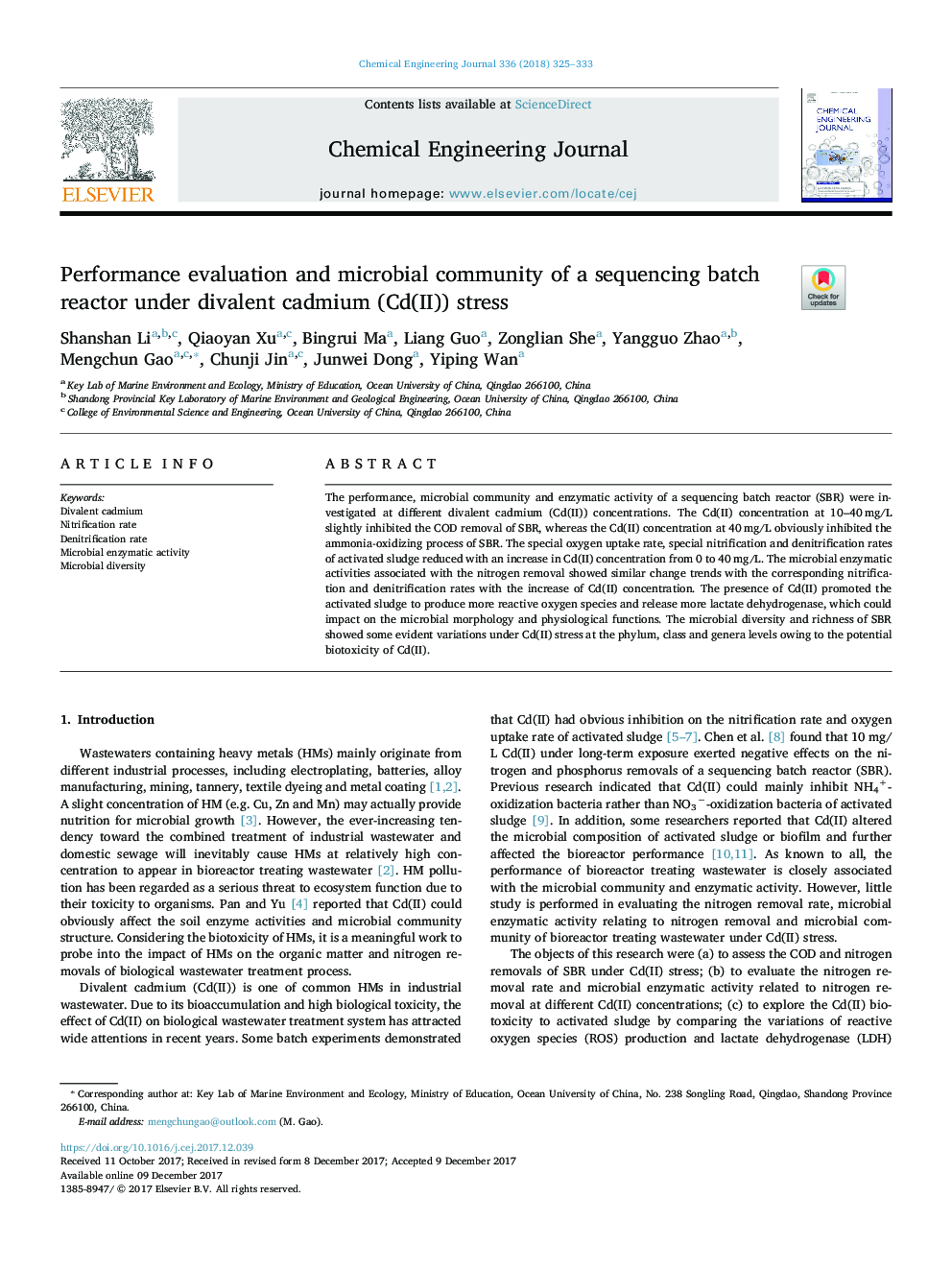| Article ID | Journal | Published Year | Pages | File Type |
|---|---|---|---|---|
| 6580613 | Chemical Engineering Journal | 2018 | 9 Pages |
Abstract
The performance, microbial community and enzymatic activity of a sequencing batch reactor (SBR) were investigated at different divalent cadmium (Cd(II)) concentrations. The Cd(II) concentration at 10-40â¯mg/L slightly inhibited the COD removal of SBR, whereas the Cd(II) concentration at 40â¯mg/L obviously inhibited the ammonia-oxidizing process of SBR. The special oxygen uptake rate, special nitrification and denitrification rates of activated sludge reduced with an increase in Cd(II) concentration from 0 to 40â¯mg/L. The microbial enzymatic activities associated with the nitrogen removal showed similar change trends with the corresponding nitrification and denitrification rates with the increase of Cd(II) concentration. The presence of Cd(II) promoted the activated sludge to produce more reactive oxygen species and release more lactate dehydrogenase, which could impact on the microbial morphology and physiological functions. The microbial diversity and richness of SBR showed some evident variations under Cd(II) stress at the phylum, class and genera levels owing to the potential biotoxicity of Cd(II).
Related Topics
Physical Sciences and Engineering
Chemical Engineering
Chemical Engineering (General)
Authors
Shanshan Li, Qiaoyan Xu, Bingrui Ma, Liang Guo, Zonglian She, Yangguo Zhao, Mengchun Gao, Chunji Jin, Junwei Dong, Yiping Wan,
